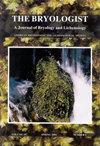罗伯特·鲁特爱尔兰(1932-2020)
IF 1.5
4区 生物学
Q4 PLANT SCIENCES
引用次数: 1
摘要
有些人在没有引起巨大轰动的情况下产生了巨大的影响。温和、谦虚的罗伯特·鲁特·爱尔兰是加拿大最重要的苔藓学家之一,也是许多自然历史事业的关键榜样。他传奇般的勤奋、准确和对细节的关注树立了一个高度激励的标准。他的慷慨和善良鼓励其他人也这样做。他的行动很有说服力,而他自己却尽量少说话,以引起人们对他的卓越和巨大影响力的注意。鲍勃在美国堪萨斯州出生、长大并接受教育。1956年,当他从堪萨斯大学获得学士学位时,他也在海军服役了一年,并找到了他的妻子和终身伴侣艾伦。他于1957年毕业,获得植物学硕士学位,并完成了他的论文《赤藓生物系统学》(Erythronium albidum and E. meschooreum)。同年,他获得了美国国家植物标本馆(史密森学会)植物标本室助理的职位,开始了他的苔藓学生涯。一年后,他晋升为苔藓植物馆助理馆长。鲍勃在工作中非常有效地学习,在史密森尼学会的早期,他发表了他的第一篇苔藓学论文。他还参加了密歇根大学生物站的苔藓植物课程,在那里他与导师a . J.夏普开始了持久的友谊,鲍勃亲切地称他为“杰克叔叔”。在夏普的敦促下,1962年,鲍勃成为华盛顿大学(西雅图)教授埃尔瓦·劳顿的助手,埃尔瓦·劳顿刚刚获得资助,创建了《西北太平洋苔藓植物区系》(劳顿1971)。这项工作激发了他对染色体研究的兴趣,他承担了这项工作,以支持植物区系项目。不久,他也开始攻读博士学位,研究北美苔藓属Plagiothecium。1966年完成博士学位后,鲍勃被聘为位于加拿大渥太华的加拿大国家自然科学博物馆(现为加拿大自然博物馆,CMN)的苔藓植物馆长,接替霍华德·克拉姆(Howard Crum),后者自1954年以来一直担任该职位,后来转到密歇根大学。在这个职位上,鲍勃负责管理一个相对较小但重要的国家苔藓植物收藏(CANM),该收藏由“Dominion Botanist”John Macoun于19世纪建立。事实上,当鲍勃到达时,植物标本室仍然挤在麦昆自己曾经工作过的那座历史悠久的石头建筑里。然而,随着这座沉重的维多利亚式建筑每年向软粘土中下沉几厘米,《植物学》的收藏很快就搬到了渥太华一栋办公楼里一个不太合适(虽然更宽敞)的“临时”住所……它在那里呆了三十多年。尽管面临诸多挑战,在鲍勃的策展期间,通过与世界各地众多机构的积极交流,繁忙的捐赠以回报身份的计划,实地工作,收养孤儿收藏品,以及一些明智的私人收藏品,收藏品从不足10万件增加到超过25万件。植物标本室的位置在一条交通线路上,在一个居民区的边缘,对所有年龄和经验的游客来说都很容易进入,鲍勃的热情欢迎发展了一个广泛的圈子,奉献了越来越多的专家标本贡献者。植物标本馆的用户一直享受最新的分类和组织,感谢鲍勃的尽职尽责,动手方法策展。作为一名研究科学家,Bob从事苔藓植物区系学,形态学和分类学研究,特别关注Plagiotheciaceae科。通讯作者:jdoubt@nature.ca DOI: 10.1639/0007-2745-126.2.217本文章由计算机程序翻译,如有差异,请以英文原文为准。
Robert Root Ireland (1932–2020)
Some people make an enormous difference without making huge splash. Gentle, modest Robert Root Ireland was one of Canada’s foremost bryologists and a key role model in many natural history careers. His legendary hard work, accuracy, and attention to detail set a highly motivating standard. His generosity and kindness encouraged others to be the same. His actions spoke persuasively, while he himself said as little as possible to call attention to his excellence and considerable influence. Bob was born, raised and educated in the state of Kansas, U.S.A. By the time he had earned his B.A. from the University of Kansas in 1956, he had also served a year in the navy, and had found his wife and lifelong partner, Ellen. He graduated with an M.A. (Botany) in 1957, having completed his thesis on ‘‘Biosystematics of Erythronium albidum and E. mesochoreum.’’ That same year, his bryological career began when he obtained the position of Herbarium Aid in Cryptogams at the United States National Herbarium (Smithsonian Institution). A year later, he advanced to Assistant Curator of Bryophytes. Learning very effectively on the job, Bob published his first bryology papers during those early years at the Smithsonian. He also attended a bryophyte course at the University of Michigan Biological Station, where he began an enduring friendship with mentor A. J. Sharp, who Bob affectionately dubbed ‘‘Uncle Jack.’’ At Sharp’s urging, in 1962, Bob became assistant to University of Washington (Seattle) professor, Elva Lawton, who was newly funded to create the Moss Flora of the Pacific Northwest (Lawton 1971). This work launched his interest in chromosome studies, which he undertook in support of the flora project. Soon, he also began to work on his Ph.D. studying the moss genus Plagiothecium in North America. After completing his doctorate in 1966, Bob was hired as Curator of Bryophytes at the Canadian National Museum of Natural Sciences (now the Canadian Museum of Nature, CMN) in Ottawa, Canada, replacing Howard Crum, who had held the post since 1954 before moving to the University of Michigan. In this role, Bob assumed responsibility for curating a relatively small but significant national bryophyte collection (CANM) that was founded in the 1800s by ‘Dominion Botanist’ John Macoun. In fact, when Bob arrived, the herbarium was still crowded into the same historic stone building where Macoun himself had worked. However, as the heavy Victorian edifice sank a few centimeters each year into the soft clay on which it had been built, the Botany collection soon moved to an ill-suited (if roomier) ‘‘temporary’’ home in an Ottawa office building . . . where it remained for more than thirty years. Despite the challenges, the collection grew from fewer than 100,000 to more than 250,000 specimens during Bob’s curatorship, through active exchanges with a multitude of institutions around the world, a busy donation-in-return-for-identification program, field work, adoption of orphan collections, and some judicious purchasing of private collections. The location of the herbarium, on a transit line, at the edge of a residential neighborhood, was easy for visitors of all ages and experience to access, and Bob’s attentive welcome developed a wide circle of devoted—and increasingly expert—specimen contributors. Herbarium users consistently enjoyed up-to-date taxonomy and organization, thanks to Bob’s conscientious, hands-on approach to curation. As a research scientist, Bob pursued moss floristics, morphology, and taxonomy, with particular attention to the families Plagiotheciaceae and 3 Corresponding author’s e-mail: jdoubt@nature.ca DOI: 10.1639/0007-2745-126.2.217
求助全文
通过发布文献求助,成功后即可免费获取论文全文。
去求助
来源期刊

Bryologist
生物-植物科学
CiteScore
2.40
自引率
11.10%
发文量
40
审稿时长
>12 weeks
期刊介绍:
The Bryologist is an international journal devoted to all aspects of bryology and lichenology, and we welcome reviews, research papers and short communications from all members of American Bryological and Lichenological Society (ABLS). We also publish lists of current literature, book reviews and news items about members and event. All back issues of the journal are maintained electronically. The first issue of The Bryologist was published in 1898, with the formation of the Society.
Author instructions are available from the journal website and the manuscript submission site, each of which is listed at the ABLS.org website.
All submissions to the journal are subject to at least two peer reviews, and both the reviews and the identities of reviewers are treated confidentially. Reviewers are asked to acknowledge possible conflicts of interest and to provide strictly objective assessments of the suitability and scholarly merit of the submissions under review.
 求助内容:
求助内容: 应助结果提醒方式:
应助结果提醒方式:


